Discover 11 hidden attractions, cool sights, and unusual things to do in Uxbridge (United Kingdom). Don't miss out on these must-see attractions: Beck Theatre, Lake Farm Country Park, and Yeading Brook Meadows. Also, be sure to include Ten Acre Wood in your itinerary.
Below, you can find the list of the most amazing places you should visit in Uxbridge (England).
Table of Contents
Beck Theatre
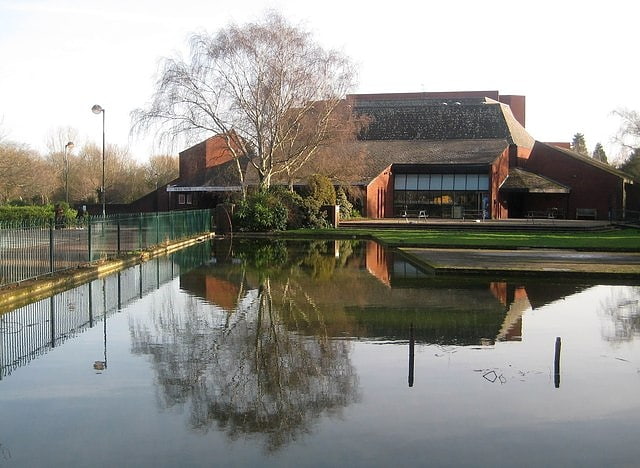
The Beck Theatre is a 600-seat theatre in Hayes, in the London Borough of Hillingdon. It was built in 1977 at a cost of £2.5 million.[1]
Lake Farm Country Park
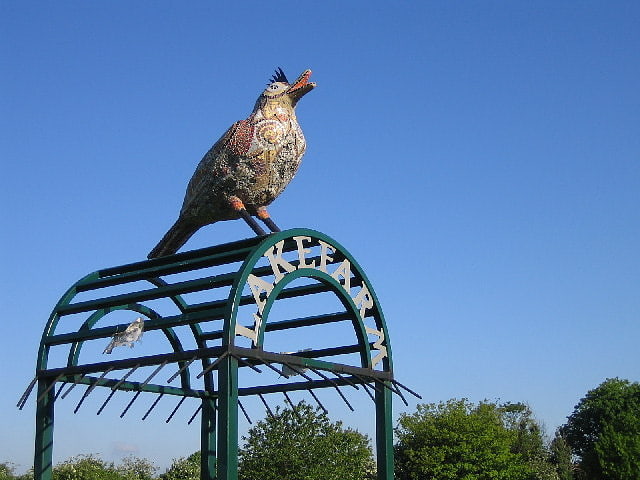
Park in Hayes, England. Lake Farm Country Park is an expanse of green belt land approximately 60 acres in size fringed by trees and the Grand Union Canal, situated in the south of Hayes in the London Borough of Hillingdon. Its formal status as a country park dates back to September 2002.
In 2014 an area of the park was developed as an academy school by Hillingdon Council. The development was controversial, since the site was classed as green-belt land, and several protests were held against the plans. Despite opposition, the application was approved in 2013, and construction continued throughout 2014. The school opened in late 2014.
The former common land site was located approximately 0.5 km to the south of Wood End, Hayes, immediately to the north of the canal. It was bounded by Dawley Road in the west, Botwell Common Road to the north, and Botwell Lane to the east.
The Country Park had ten formal pedestrian entrances along Dawley, Botwell Common Road, the Grand Union Canal and Botwell Lane. It also had two bridleway entrances: one off Botwell Common Road and one off Dawley Road.[2]
Yeading Brook Meadows
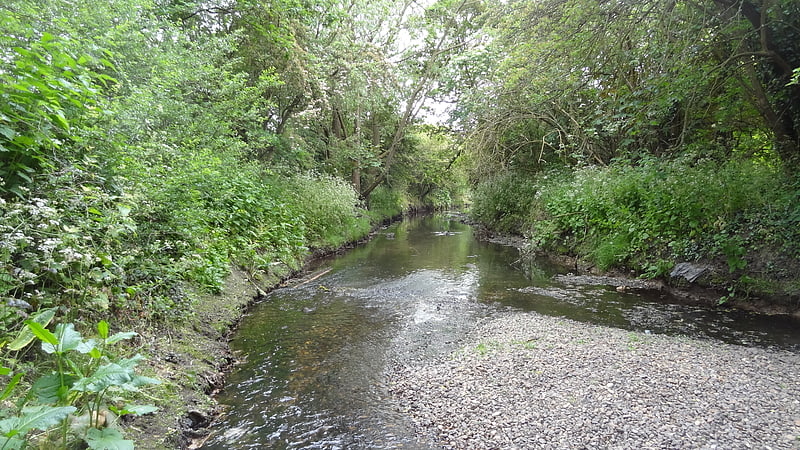
Park in Hayes, England. Yeading Brook Meadows is a 17 hectare Local Nature Reserve in Yeading in the London Borough of Hillingdon. It is owned by Hillingdon Council and managed by the London Wildlife Trust. In the north it adjoins Ten Acre Wood across the Golden Bridge and Charville Lane; it then stretches south along the banks of the Yeading Brook to Yeading Lane. The reserve is also part of the Yeading Brook Meadows Site of Metropolitan Importance for Nature Conservation, which includes two neighbouring LNRs managed by the London Wildlife Trust, Ten Acre Wood and Gutteridge Wood and Meadows.
The site is mainly grassland, with a variety of wild flowers such as the narrow-leaved water-dropwort and common spotted orchid. Invertebrates include Roesel's bush-crickets, shield bugs and skipper butterflies, and there are birds such as skylark and snipe.
There is access from a number of points including Charville Lane, Kingshill Avenue and Greenway.[3]
Ten Acre Wood
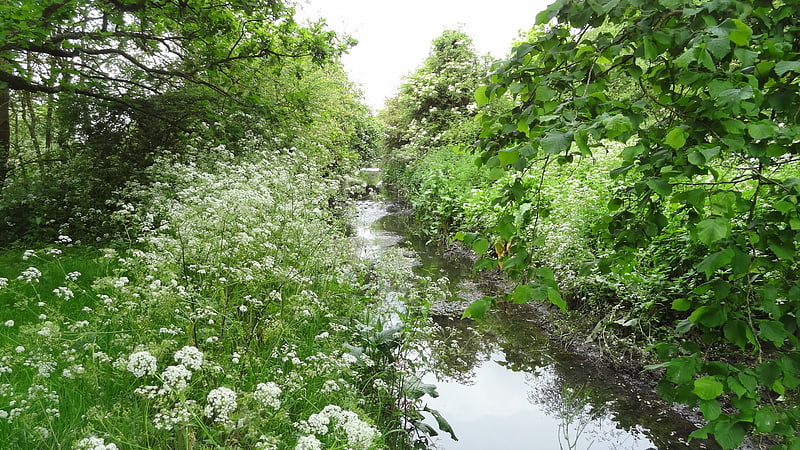
Nature preserve in Hayes, England. Ten Acre Wood is a Local Nature Reserve in Yeading in the London Borough of Hillingdon, which is owned by Hillingdon Council and managed by the London Wildlife Trust. It is also part of the Yeading Brook Meadows Site of Metropolitan Importance for Nature Conservation, which includes two neighbouring LNRs managed by the LWT, Gutteridge Wood and Meadows and Yeading Brook Meadows LNR.
The site is composed of two areas of woodland adjoining at one corner. It is a hundred year old oak plantation with an underlayer of hawthorn and blackthorn. Yeading Brook runs through the wood, and it has areas of marsh and meadow. Birds include hobbies and kingfishers, and there are invertebrates such as Roesel's bush crickets, long winged coneheads and gatekeeper butterflies.
The site adjoins Yeading Brook Meadows to the south across Charville Lane and the Golden Bridge across the brook. In the north of the wood a footpath leads west across the brook to Gutteridge Wood and Meadows.[4]
Barra Hall Park

Park in Hayes, England. Barra Hall Park is an 11.06-hectare formal park situated near the centre of Hayes in the ward of Townfield in the London Borough of Hillingdon. The park came into existence in December 1923.
The main entrance to the park is off Freemans Lane. There are ten entrances all together, spread around the perimeter of the park.[5]
Minet Country Park
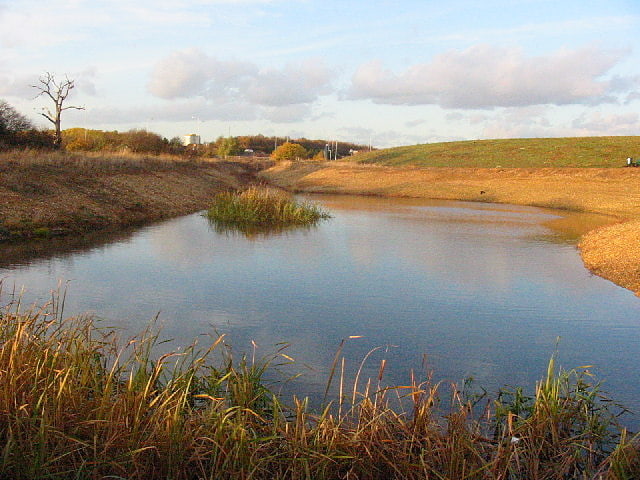
Park in Hayes, England. Minet Country Park is a 36-hectare park on Springfield Road, Hayes in the London Borough of Hillingdon; it is situated between the A312 and the Uxbridge Road.[6]
Islip Manor Meadows
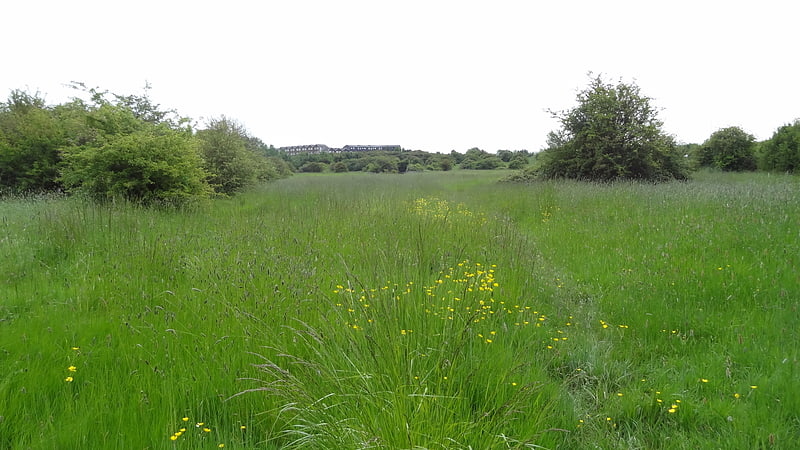
Islip Manor Meadows is a 23.75 hectare Local Nature Reserve and Site of Metropolitan Importance for Nature Conservation in Northolt in the London Borough of Ealing. It is owned and managed by Ealing Council.
Islip Manor was named after the Ruislip family, who owned the estate in the fourteenth and fifteenth centuries. It was part of Northolt Manor until about 1690, when it was sold to Charles Hawtrey. It was farmland until the end of the nineteenth century, and in 1880 it was producing 100 tons of hay a year. In 1928 it was sold to Ealing Council, and now forms part of the Metropolitan Green Belt.
The site is a wet meadow which is divided into fields by thick hedges. The ecology is diverse, with over twenty grass and ten leguminous species. Uncommon plants include ragged-robin, lesser spearwort and oval sedge. The site also has the protected great crested newt.
There is access by a stile at the end of Arnold Road.[7]
Kingcup Meadows and Oldhouse Wood
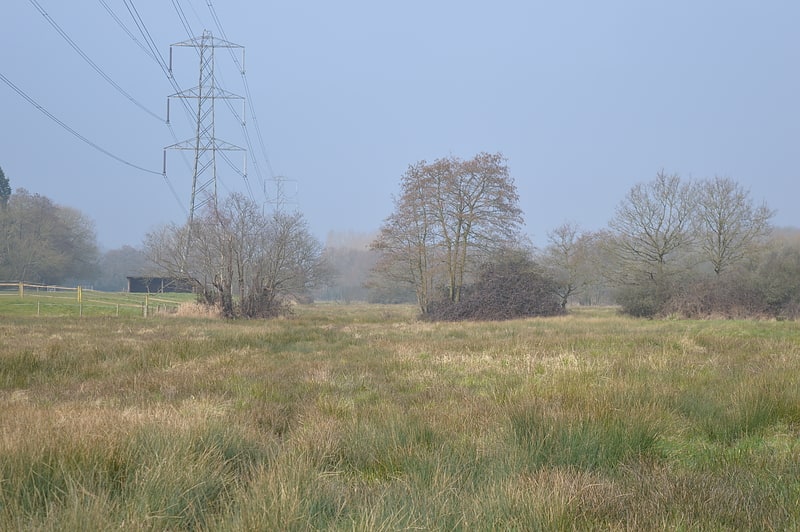
Kingcup Meadows and Oldhouse Wood is a 13.2 hectare biological Site of Special Scientific Interest south of Denham in Buckinghamshire.
The site is a mosaic of different habitats next to the River Alder Bourne, including unimproved pasture and woodland. The meadows have dry and wet grassland, swamp and fen. The eastern fields are grazed by cattle and the eastern ones, which are drier, have a late hay crop. Grasses include red fescue and in drier areas and creeping bent in wetter ones. Oldhouse Wood has ash and field maple on upper slopes and oak and birch on lower ones. There are several species of dragonfly.
There is access from a road between Copse Hill Farm and Willetts Lane.[8]
Ace Cinema
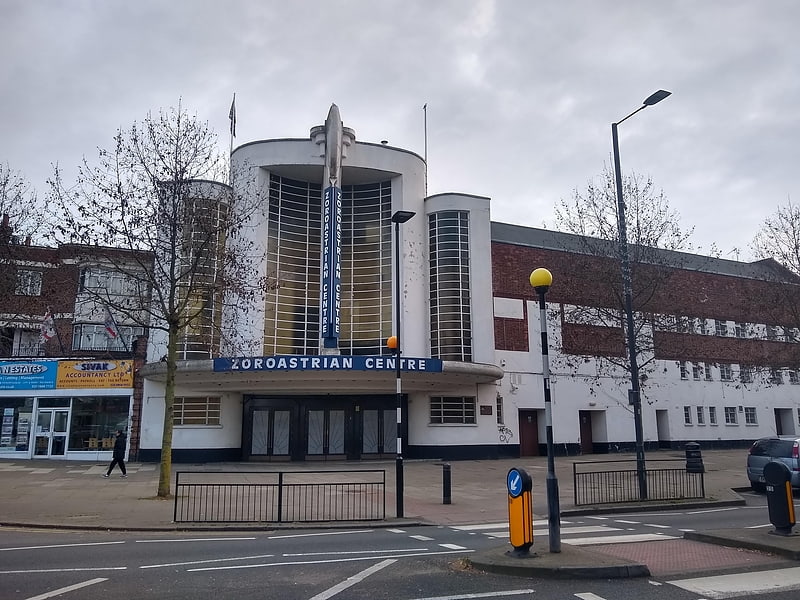
The Ace Cinema, originally the Grosvenor Cinema and now known as the Zoroastrian Centre, is a Grade II* listed Art Deco former cinema in Rayners Lane in the London Borough of Harrow.[9]
Roxeth

Roxeth was a hamlet in the ancient Harrow on the Hill parish, which now forms part of the London Borough of Harrow in Greater London, England.
The ancient parish of Harrow on the Hill, or simply Harrow, was one of the largest parishes in Middlesex. Apart from Harrow Town, it encompassed a number of smaller settlements, including Roxeth itself, Greenhill, Harrow Weald, Kenton, Preston, Uxendon, Tokyngton, Sudbury, Wembley and Alperton.
Roxeth village was adjacent to Harrow on the Hill, along the main road to the south. The name Roxeth is thought to derive from a contraction of 'Rooks Heath' and much of the land between Roxeth and Sudbury was indeed heathland as far as the early 19th century. A mediaeval moated manor existed until the mid-20th century. On its site stands a council housing estate.
Development around the crossroads at the bottom of Harrow on the Hill, an area known as Roxeth Corner, was under way in the early 19th century, using brick from the nearby brickworks in Lower Road. A Wesleyan Chapel was built soon after 1817 on London Hill (now called Roxeth Hill). In 1864, the Wesleyans moved to a new larger chapel in Lower Road, which has since become the Welsh Congregational Chapel. By 1880, the former Wesleyan chapel had been converted to an elementary school which it remained until at least the 1930s. Christ Church on Roxeth Hill, which was built in 1862 by the celebrated architect George Gilbert Scott as a chapel of ease to St Mary's Harrow on the Hill, has cemetery records that begin in 1863 and go on till at least 1942. In 1906, the stone was laid for a Salvation Army Hall (presently vacant) on Roxeth Hill, adjacent to the Half Moon Pub which was there since at least 1880.
South Harrow and Roxeth railway station, on the Marylebone to High Wycombe mainline, was opened in 1926 at the far end of the village and renamed Northolt Park Station in 1929. Roxeth is now also served by South Harrow tube station.
The name of the parish lives on as a current Ward of the London Borough of Harrow and in local schools, Roxeth First and Middle Schools as well as Rooks Heath School (formerly known as Rooks Heath High School and, before that, Roxeth Manor Secondary School for Boys and Roxeth Manor Secondary School for Girls), as well as in the name of the parish church, Christ Church Roxeth. Also the oldest children's voluntary group in the Borough, the Roxeth & Harrow Company of the Church Lads' and Church Girls' Brigade, was formed on 1 October 1894. It received the Freedom of Entry to the Borough, the first civilian group to be such honoured, in 1994. This was “In recognition of its centenary and the outstanding continuous service provided by the Brigade to the Harrow Area.” Their near neighbours, the Royal British Legion and 1454 Sqn Air Training Corps received same in 1996 and 2014 respectively.
Roxonian Football Club was formed in 1933. It is now called Harrow Borough F.C. and plays at Earlsmead Stadium on the west side of Roxeth, on former common land known as Dobbs Field.[10]
Yeading
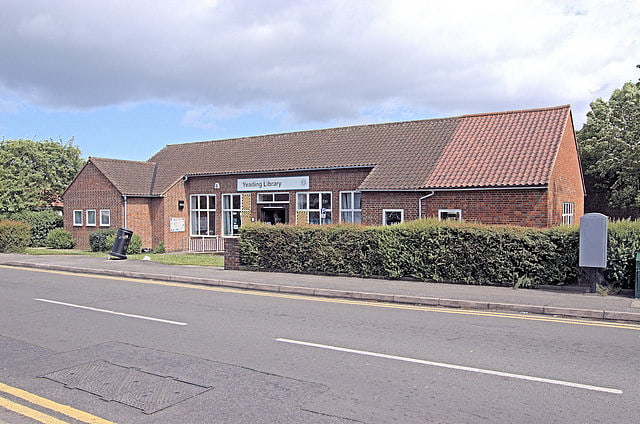
Yeading is a settlement in west London, forming part of the London Borough of Hillingdon, having been developed after the Second World War.[11]